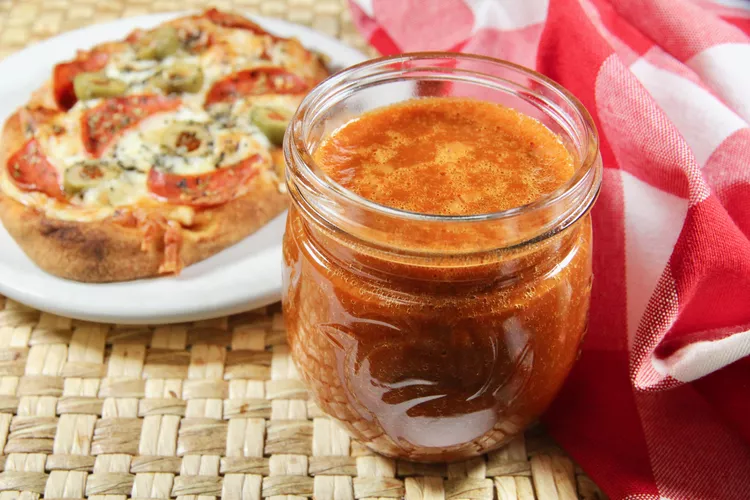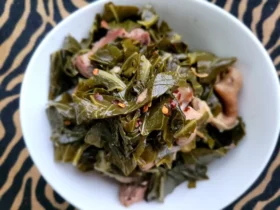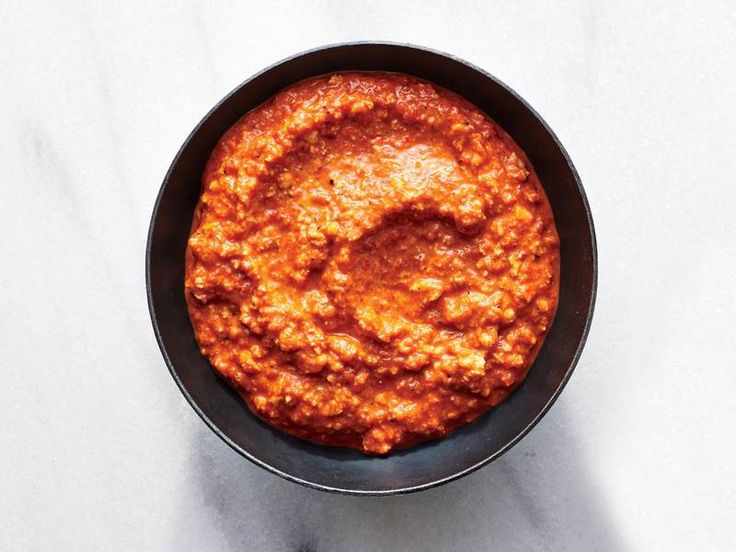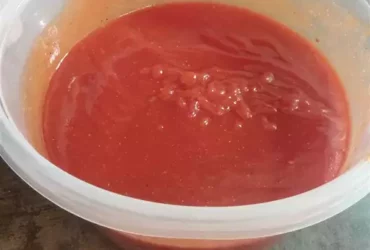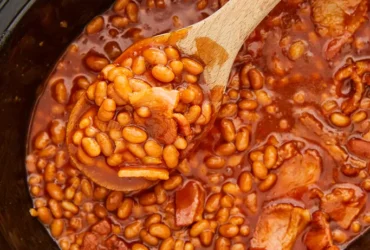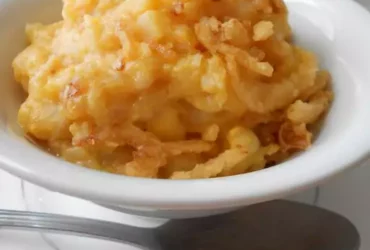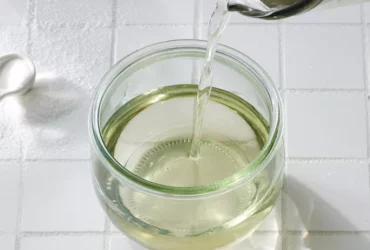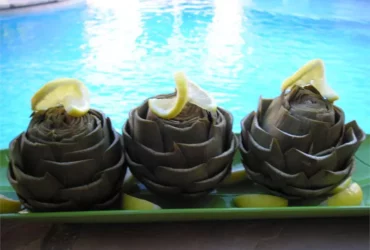Ingredients
Red Peppers
Red peppers are a staple ingredient in many cuisines around the world, and for good reason – they add a sweet, smoky flavor to dishes that’s hard to beat. For our easy blender red pepper sauce recipe, you’ll want to use a combination of ingredients that will bring out the best flavor from these delicious peppers.
The two main types of red peppers used in cooking are bell peppers and hot peppers. Bell peppers are sweet and mild, while hot peppers are spicy and add a kick to dishes. For our sauce recipe, we’ll be using a mix of both bell and hot peppers for a balanced flavor. You can adjust the level of heat to your liking by using more or fewer hot peppers.
Other ingredients you’ll need for this recipe include garlic, onion, olive oil, salt, pepper, and sometimes lemon juice or vinegar. These additional flavors will enhance the sweetness of the red peppers and add depth to our sauce.
When selecting red peppers, choose ones that are firm and glossy, with no signs of mold or bruising. The color can vary from bright red to deep crimson, depending on the variety. If you’re looking for a milder flavor, use bell peppers; for more heat, use hot peppers like jalapenos or Anaheim.
For our blender sauce recipe, we’ll be using about 3-4 cups of sliced red peppers, which should yield around 2 cups of pureed sauce. You can adjust the amount to suit your needs and preferences. Be sure to remove seeds and membranes from the hot peppers for a smoother consistency.
In terms of flavor profile, red pepper sauce is often associated with Mediterranean cuisine, particularly in Greek and Turkish cooking. The sweet, slightly smoky taste pairs well with grilled meats, seafood, pasta, or vegetables, making it an excellent addition to many dishes.
Keep in mind that the color of the sauce will depend on the type of red peppers used – a mix of bell and hot peppers will yield a rich, deep red color. If you prefer a lighter shade, use only bell peppers for your sauce.
With these ingredients and tips, you’re ready to create a delicious and easy blender red pepper sauce recipe that’s perfect for adding flavor to a variety of dishes!
4 large red bell peppers
When it comes to making a delicious and flavorful blender red pepper sauce, the ingredients play a crucial role.
Here are the essential Ingredients
- 4 large red bell peppers: This is the star ingredient of our sauce recipe. Red bell peppers add a sweet, slightly smoky flavor and a beautiful vibrant color to the sauce.
The quality of your red bell peppers can make a big difference in the final taste of your sauce. Look for firm, glossy peppers with no soft spots or signs of mold. If you can’t find fresh red bell peppers, you can also use frozen or canned ones as a substitute.
Other than red bell peppers, our blender red pepper sauce recipe requires only a few basic pantry ingredients that most people already have at home, such as garlic, onion, and olive oil. This makes it easy to whip up a delicious and healthy sauce in no time!
Pantry Staples
- Garlic: A few cloves of garlic will add a deep, savory flavor to the sauce.
- Onion: Use 1 small onion or 3-4 scallions for this recipe.
- Olive oil: This is our base oil for sautéing and blending with the peppers. Choose a high-quality extra-virgin olive oil for the best flavor.
- Coarse salt and black pepper: Season to taste!
With these ingredients, you’re ready to make our Easy Blender Red Pepper Sauce Recipe!
1/4 cup olive oil
Olive oil is a fundamental ingredient in many recipes, and in the case of this Easy Blender Red Pepper Sauce Recipe, it plays a crucial role in bringing out the flavors of the red peppers.
The amount specified for olive oil is 1/4 cup, which is a relatively small quantity compared to other ingredients in the recipe. However, its impact on the final product cannot be overstated.
In terms of quality, it’s essential to use high-quality olive oil that has a good balance of acidity and flavor. A mild or light-tasting olive oil would work best in this recipe as it won’t overpower the delicate flavor of the red peppers.
Some popular options for olive oil include:
- Arbequina
- Koroneiki
- Nocellara
- Tuscan Extra Virgin Olive Oil
These types of olive oil are known for their rich, fruity flavors and would complement the sweetness of the red peppers perfectly.
When using olive oil in cooking, it’s essential to remember that a little goes a long way. The 1/4 cup specified in this recipe is sufficient to add moisture and depth to the sauce without overpowering the other ingredients.
In summary, olive oil is an integral part of the Easy Blender Red Pepper Sauce Recipe, and its use helps to create a smooth, rich, and flavorful sauce that’s perfect for pasta, meatballs, or as a dipping sauce.
Salt, to taste
Salt, to taste, is an essential ingredient used in the Easy Blender Red Pepper Sauce recipe to enhance the flavor and bring out the natural sweetness of the red peppers.
In this recipe, salt serves a few purposes. Firstly, it balances the acidity from the lemon juice or vinegar, creating a harmonious flavor profile that is neither too sharp nor too bland.
Secondly, salt enhances the umami taste in the dish, which is often described as savory, meaty, or brothy. This is especially important for sauces like red pepper sauce, where the depth of flavor can elevate the overall culinary experience.
The amount of salt to use depends on personal preference and individual taste buds. Some people may prefer a lighter sprinkle of salt, while others may need a pinch more to achieve their desired level of seasoning.
It’s worth noting that using high-quality salt is crucial in this recipe. Unrefined or flaky sea salt can add texture and a subtle sweetness to the sauce, whereas refined table salt may simply provide a salty flavor without any additional depth.
When adding salt to taste, it’s essential to start with a small amount and gradually increase as needed. This approach helps prevent over-salting the sauce, which can be difficult to rectify once it’s been added.
In summary, salt is an integral component of this Easy Blender Red Pepper Sauce recipe, contributing to its flavor balance, umami taste, and overall culinary appeal.
Optional Add-ins
The key to creating an excellent Red Pepper Sauce lies in selecting the finest ingredients and optional add-ins to elevate its flavor and texture.
Canned Tomatoes, preferably Fresh or Crushed San Marzano Tomatoes, form the foundation of this sauce, providing a tangy base and rich flavor. Fresh Red Bell Peppers, roasted to perfection, add a sweet and smoky depth.
A hint of Aromatics, such as Caramelized Onion or Sautéed Garlic, adds complexity and a savory touch. Spices like Dried Oregano and Red Pepper Flakes enhance the overall flavor, while a pinch of salt amplifies its taste.
Herbs, such as fresh or dried Basil or Cilantro, contribute a bright and refreshing quality. For an added layer of richness, you can include ingredients like Butter or Olive Oil.
Optional Add-ins can transform the sauce into a unique creation. Some ideas include:
- Cooked Bacon for added smokiness
- Diced Carrots or Purple Cabbage for extra fiber and color
- Crumbled Feta Cheese for a tangy twist
- Chopped Sun-dried Tomatoes for intense tomato flavor
When combining these ingredients, keep in mind the balance of flavors and textures. Adjust the quantities to suit your taste preferences and dietary requirements.
1 small onion, finely chopped
For the delicious and easy-to-make blender red pepper sauce recipe, we need a crucial ingredient that adds flavor and depth to the dish – 1 small onion finely chopped.
A small onion, when finely chopped, will not only add a sweet and savory taste to the sauce but also provide a crunchy texture that blends seamlessly with the smoothness of the blender-red-pepper puree.
The process of chopping an onion finely involves cutting it into tiny pieces using a sharp knife or a food processor until it reaches your desired consistency. It’s essential not only for achieving the best flavor possible but also to ensure even cooking and blending in the subsequent steps.
One small onion typically yields about 1/4 cup of chopped onion, which is sufficient for most recipes. If you prefer a stronger onion flavor or want to make a larger batch of sauce, simply adjust the quantity accordingly.
When choosing an onion for this recipe, opt for a sweet and mild variety such as Vidalia or red onion for the best results. Avoid using strong-flavored onions like yellow or white onions if you prefer a milder taste.
3 cloves garlic, minced
In the Easy Blender Red Pepper Sauce Recipe, one of the essential ingredients to prepare the flavorful sauce is 3 cloves garlic, minced. Garlic plays a crucial role in adding depth and aroma to the dish. To utilize this ingredient effectively, it’s vital to understand the proper preparation method.
The first step in incorporating garlic into your recipe is selecting the right type. For most recipes, including this Blender Red Pepper Sauce Recipe, three to four cloves of regular or elephant garlic work well. Elephant garlic has a milder flavor and larger cloves compared to regular garlic, making it an excellent choice for those who prefer a subtle taste.
Once you’ve chosen your garlic, the next step is peeling it. Hold each clove firmly with a paring knife on top of it and twist off the skin in one direction until it’s removed. This process helps to loosen and remove any stubborn skin that may cling to the clove.
The key to mincing garlic effectively lies in using a sharp knife or chef’s tool. To mince, place each peeled garlic clove on its side and hold your cutting tool at a 45-degree angle just above the root end. Gently rock your tool back and forth while applying gentle pressure until the desired minced texture is achieved.
For this Easy Blender Red Pepper Sauce Recipe, aim for a fine or medium mince depending on your preference. A finer mince will break down more smoothly in the blender and infuse the sauce with a stronger flavor.
Avoid over-mincing, which can release more pungent compounds and make the sauce unpalatable. Also, don’t over-press, as this may lead to excessive garlic oil extraction and cause an unpleasant bitterness in your finished product.
Now that you’ve prepared your minced garlic, it’s time to blend it into your Red Pepper Sauce Recipe alongside roasted red peppers, olive oil, salt, lemon juice, and other essential ingredients. As the blender whips these components together, the pungency of the garlic will subtly infuse throughout, leaving a rich aroma that elevates this simple sauce into a culinary masterpiece.
1 tablespoon tomato paste
Tomato paste is a concentrated form of tomatoes that have been cooked down to remove excess moisture and water, resulting in a thick, rich paste with an intense tomato flavor.
The use of tomato paste in cooking adds depth, complexity, and a burst of fruity sweetness to sauces, soups, stews, and other dishes, making it an essential ingredient in many recipes.
In the context of the Easy Blender Red Pepper Sauce Recipe, one tablespoon of tomato paste is added to give the sauce its distinctive flavor and aroma.
The tomato paste is often confused with ketchup or tomato puree, but it has a much stronger and more concentrated flavor, making it a fundamental component in many savory dishes.
When using tomato paste, it’s essential to mix it well into the dish, as it can be quite dense and sticky.
To get the most out of your tomato paste, try mixing it with olive oil or butter to create a flavorful sauce base that adds richness and depth to soups, stews, or sauces.
As with any concentrated ingredient, use tomato paste sparingly, as its intense flavor can quickly overpower other ingredients in a dish.
One tablespoon of tomato paste is usually sufficient to give the Easy Blender Red Pepper Sauce Recipe its characteristic taste and color.
Tips and Techniques
Prioritizing Roast Evenness
To achieve perfect roast evenness when making the easy blender red pepper sauce recipe, it’s essential to focus on a combination of temperature control, rotation techniques, and ingredient selection.
The first step in prioritizing roast evenness is to ensure that your oven or roasting device is set at the correct temperature. For most recipes, 400°F (200°C) is an optimal temperature for roasting red peppers. It’s crucial to use a thermometer to confirm that the desired temperature has been reached.
Another critical factor in achieving even roasting is rotation. To ensure uniform browning and cooking, it’s necessary to rotate the peppers at least once during the roasting process. This can be done by placing the peppers on a baking sheet lined with parchment paper or by using a rotisserie attachment on your oven.
In addition to temperature control and rotation, the size and shape of the red peppers will also impact roast evenness. Smaller peppers tend to cook more evenly than larger ones, so it’s often beneficial to use multiple small peppers rather than one large pepper for the recipe.
When selecting red peppers, look for those that are firm and have a vibrant color. Avoid peppers with soft spots or wrinkled skin, as these may not roast evenly. It’s also essential to remove any seeds or white membranes from the peppers before roasting, as these can cause bitterness in the final sauce.
Finally, to enhance roast evenness, it’s helpful to use a technique called ‘tenting.’ This involves covering the peppers with foil for part of the roasting time to prevent over-browning and promote more uniform cooking. By tenting the peppers, you can ensure that they are cooked through but still retain their bright red color.
By incorporating these tips and techniques into your recipe, you’ll be able to achieve a deliciously smooth and even red pepper sauce every time.
Place red peppers on a baking sheet with cut side up.
The key to making a great Red Pepper Sauce lies in properly preparing the ingredients, and that starts with placing the red peppers on a baking sheet with the cut side up. This allows for even roasting of the peppers, which is essential for bringing out their natural sweetness and depth of flavor.
Place 2-3 red bell peppers (any variety will do) on a baking sheet lined with parchment paper. If using a convection oven, you can roast them in batches to ensure even cooking. Otherwise, simply arrange them in a single layer, making sure they have enough space to breathe.
Next, preheat your oven to 425°F (220°C). Yes, it’s hot – and that’s exactly what we want! The high heat will help break down the cell walls of the peppers, releasing their natural oils and flavors. Roast the peppers in the preheated oven for about 20-25 minutes, or until their skin is blistered and charred.
After roasting, remove the baking sheet from the oven and let it cool slightly. This will make it easier to handle the peppers. Using a pair of tongs or a spatula, carefully transfer the roasted red peppers to a bowl or container with a lid. Cover the bowl with plastic wrap or a damp paper towel to trap the steam.
Let the peppers sit for at least 30 minutes to an hour, allowing them to steam and cool down. This step is crucial in making the pepper sauce, as it will help loosen the skin and make it easy to peel. Once the peppers have cooled, simply peel off the skin, discard the seeds and membranes, and chop or puree them according to your desired texture.
The resulting sweet and smoky flavor of the roasted red peppers is perfect for making a delicious and healthy sauce that’s great with pasta, pizza, or as a dip. In our next article, we’ll show you how to make an easy blender red pepper sauce recipe using these perfectly prepared ingredients.
Roast at 425°F (220°C) for about an hour or until the skin is blistered.
To achieve a perfectly roasted red pepper, you’ll want to follow these tips and techniques:
- Preheat your oven to 425°F (220°C). This high heat will help to caramelize the natural sugars in the peppers, giving them a sweet and slightly smoky flavor.
- Line a baking sheet with aluminum foil or parchment paper. This will make cleanup a breeze and prevent the peppers from sticking to the pan.
- Rinse the red peppers under cold water, then pat them dry with paper towels. This step is crucial in removing any dirt or moisture that might affect the roasting process.
- Place the red peppers on the prepared baking sheet, leaving some space between each pepper to allow for even roasting. You can also wrap the stems together with kitchen twine to create a makeshift “nest” for the peppers.
- Roast at 425°F (220°C) for about an hour or until the skin is blistered and charred. You may need to rotate the peppers halfway through the cooking time to ensure even browning.
- Once the peppers are done roasting, remove them from the oven and let them cool in a bowl covered with plastic wrap. This will help steam the peppers and loosen their skins.
- After about 15-20 minutes, peel the roasted red peppers by sliding off the skin. You can use a paper towel or your fingers to gently pull off the charred skin.
- Cut the peeled peppers into small pieces and discard any seeds or membranes. These will add flavor and texture to your blender red pepper sauce recipe.
Let them cool down.
To make the most out of this Easy Blender Red Pepper Sauce Recipe, it’s essential to let the roasted red peppers cool down completely before blending them into a smooth sauce.
This cooling process serves several purposes, including:
- Prevents Blending Burn: If you blend hot peppers while they’re still warm, you risk splashing or spraying the mixture everywhere, making a mess and potentially causing discomfort to your skin and eyes.
- Allows for Better Texture: Cooling down the peppers helps break down their cell walls, resulting in a smoother, more even sauce when blended.
- Enhances Flavor: As the peppers cool, their flavors mellow out, allowing you to capture their subtle sweetness and depth without the overwhelming heat of fresh peppers.
To let the red peppers cool efficiently:
- Remove them from the oven or grill once they’re slightly charred on the outside and soft inside. This should take about 30-40 minutes for most pepper varieties.
- Allow them to air dry in a well-ventilated area for at least 30 minutes to an hour. You can place them on a wire rack, tray, or even directly onto a paper towel-lined plate.
- If you’re short on time, wrap each pepper individually in aluminum foil and refrigerate them overnight before blending the next day.
- Once your peppers have cooled down completely, you’re ready to blend them into this delicious, easy Blender Red Pepper Sauce Recipe.
Blend and Serve
Preparation
The first step to preparing this delicious red pepper sauce is to start with fresh and high-quality ingredients. This includes two large red bell peppers, seeded and chopped into bite-sized pieces.
To begin making the sauce, peel the garlic cloves and chop them finely before sautéing in a little olive oil until fragrant and slightly caramelized. This will add depth and a nutty flavor to the final product.
Next, add the chopped red peppers to the pan with the garlic and cook for about 5 minutes or until they start to soften. Be careful not to overcook them as you want to maintain their crunchiness.
Transfer the cooked vegetables to a blender along with some chicken broth (you can use vegetable broth if preferred) and any desired spices such as salt, black pepper, or cayenne pepper for added heat.
The ratio of vegetables to liquid is flexible, so adjust it according to your preference. Some people like their sauce thicker while others prefer it more saucy.
Blend the mixture on high speed until smooth and creamy. You might need to stop the blender occasionally to scrape down the sides with a spatula.
Taste the sauce and adjust the seasoning if necessary. If you find it too thick, add some more chicken broth or water. If it’s not hot enough, add a pinch of red pepper flakes.
The final step is to transfer the sauce back into a pan and simmer over low heat for about 10-15 minutes, stirring occasionally, until the flavors have melded together and the sauce has thickened slightly.
Remove seeds from roasted red peppers.
The process of making a delicious Blender Red Pepper Sauce begins with removing seeds from roasted red peppers, which can be done through two different methods.
Method 1:
- Carefully peel off the skin from the roasted peppers and place them in a blender or food processor.
- Rather than seeding the peppers first, simply blend the peeled peppers with other desired ingredients to create a smooth sauce.
Method 2:
- Remove the top stem from each pepper and place them in a bowl.
- Gently pull out the seeds, membranes, and any white parts inside the peppers, and discard these parts.
- Place the seedless roasted red peppers in the blender or food processor along with other ingredients for making the sauce.
This two-step process will ensure a high-quality Red Pepper Sauce with minimal bitterness from the seeds.
Peel off their skins.
To create the perfect Blend and Serve sauce with a smooth texture and vibrant red color, you will need to peel off the skins of the peppers first.
This process may seem unnecessary, but trust us – it makes all the difference in the final product!
Why Peel the Peppers?
- The skin of the red pepper can be quite tough and fibrous, which can give the sauce an unpleasant texture.
- Peeling the peppers will also help to remove any bitter or astringent flavors that can be present in the skin.
To peel off the skins of the peppers, simply place them under running cold water and gently rub the skin with your fingers. The skin should start to come off easily.
How to Peel Off the Skins
- Start by cutting off the top of each pepper to remove any stems or seeds.
- Hold each pepper under cold running water and gently rub the skin with your fingers. You should start to see the skin come off in small pieces.
- Continue rubbing the skin until most of it has been removed. Some bits may still remain, but this is okay!
Once you have peeled all the peppers, proceed with chopping them up and adding them to your blender along with any other ingredients called for in your recipe.
Transfer them to a blender with other ingredients.
To make this Easy Blender Red Pepper Sauce Recipe, you’ll need to blend and serve or transfer it to a blender with other ingredients. However, we’re focusing on blending. You can start by preparing your ingredients, such as roasting red peppers in the oven until they’re charred and blistered.
Once your peppers are ready, peel off their skin and chop them into small pieces. Then, add these chopped red peppers to a blender with other key ingredients like garlic, olive oil, salt, and sometimes lemon juice or vinegar.
The goal is to combine these ingredients in the right proportions so that they create a smooth, slightly spicy sauce when blended together. You can also consider adding some tomato paste or canned tomatoes for extra depth of flavor, though this step isn’t strictly necessary if you want a more minimalist red pepper sauce recipe.
Blend the mixture on high speed until it’s as smooth and creamy as possible. This could take anywhere from 30 seconds to several minutes depending on the strength of your blender and the texture of the ingredients you’re working with.
To ensure that the sauce doesn’t have any chunky bits or lumps, you may need to scrape down the sides of the blender periodically while it’s running. This is a common step in many blending recipes, especially those involving thick or fibrous ingredients like peppers and tomatoes.
Blend on high speed for about 30 seconds.
The first step in making a delicious and easy red pepper sauce using a blender is to blend on high speed for about 30 seconds.
This step is crucial as it allows the ingredients to break down efficiently and helps to release their natural flavors and oils.
When blending, make sure not to over-blend or burn out your blender’s motor, as this can lead to a decrease in its lifespan and affect the overall quality of the sauce.
To achieve optimal results:
- Start by adding all the ingredients to the blender jug, including the roasted red peppers, garlic cloves, olive oil, salt, and any other desired seasonings or spices.
- Close the lid securely to prevent splashing and ensure a smooth blending process.
- Select the high-speed mode on your blender, which is usually indicated by a specific button or setting.
- Pulse the blender for about 30 seconds to break down the ingredients, then pause for 10-15 seconds to allow any large chunks to settle back into place.
By blending on high speed for 30 seconds, you can effectively puree the ingredients and achieve a smooth, creamy sauce with a vibrant red color and a slightly spicy flavor.
This easy blender red pepper sauce recipe is perfect for pasta dishes, pizza toppings, or as a dip for vegetables and crackers.
Season with salt to taste.
Incorporating the instruction ‘Blend and Serve’ into the Easy Blender Red Pepper Sauce Recipe allows for a streamlined process that produces a delicious, vibrant sauce with minimal effort.
To begin with, it’s essential to understand that blending the ingredients is a crucial step in creating a smooth and even sauce. The red peppers, garlic, olive oil, salt, and sometimes other ingredients are combined in a blender or food processor until they reach a consistent texture.
The ‘Blend’ step involves processing the ingredients for about 30 seconds to 1 minute, depending on the desired consistency. It’s essential not to over-blend, as this can lead to an unpleasantly bitter taste and an unappealing texture. Aiming for a slightly chunky sauce or smooth sauce is entirely up to personal preference.
Once you’ve reached your preferred level of blending, it’s time to serve the Red Pepper Sauce. Transfer the sauce into serving bowls, plates, or use it as a topping for pasta dishes, vegetables, meatballs, pizza, bread, or even as a dip for crudités or crackers. The key is to allow guests to help themselves and enjoy the flavors of the fresh ingredients.
The final step involves adding salt to taste. This might seem like an afterthought, but it’s actually one of the most crucial aspects in achieving a balanced flavor profile. Add salt judiciously and according to your personal taste preferences. A pinch can enhance the flavors, while too much can overpower them.
- Best Lusha Alternatives for 2025 - April 22, 2025
- Best Overloop Alternatives for 2025 - April 22, 2025
- Best 6sense Alternatives for 2025 - April 22, 2025

